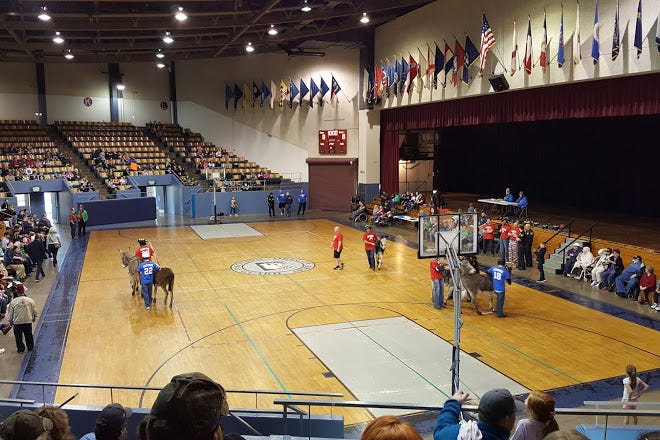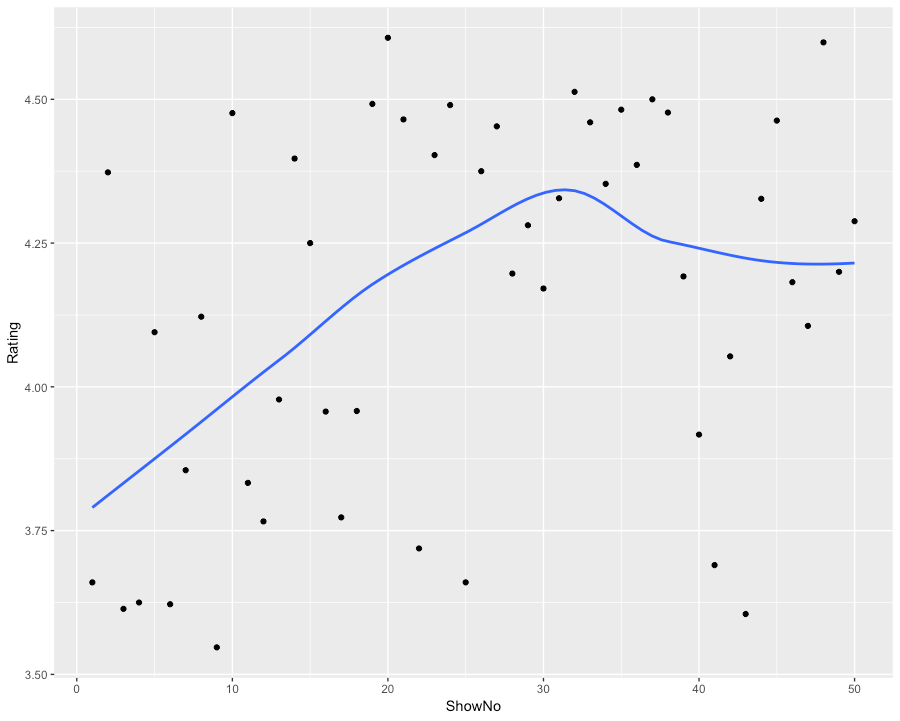
In 29 days, Phish will headline a sold-out Madison Square Garden, “The World’s Most Famous Arena” according to the plastic cocktail glasses I kept from my visit in 2016. But on this night, they played what Kevin Shapiro’s notes call “a high school gymnasium type place” in Salem, Oregon. One of the top Google Image results for the Salem Armory shows horses parading on a basketball court and a very wide stage that looks like it’s seen more high school productions of Grease than national touring acts. But at 3,426 capacity, the Salem Armory is actually one of the larger rooms Phish will play on this western swing, with venues as small as the Acker Gym at Chico State University (capacity 2100) and the Spreckels Theatre in San Diego (capacity 1360!).
I’ve talked a lot about the wide variance of venue size in 1994 and how that may have affected how the band approached each individual show, but there’s no contrast as stark as West Coast vs. East Coast. The Spreckels is less than a tenth the size of MSG and the Boston Garden! To fill the three California venues (12/2 in Davis, 12/3 in San Jose, 12/10 in Santa Monica) that come closest to their pull in the Midwest, Phish had to combine forces with Dave Matthews Band, who were coincidentally doing their own West Coast run in late 1994. Never mind the economics, imagine how different the pre-show ritual is between the dressing room at Madison Square Garden and what I presume is a repurposed teacher’s lounge or locker room at Chico State.
We can speculate all we want about how the venue affects the show, but we can also interrogate the question using...Science! Shapiro helpfully provides venue capacity in most of his show notes, and the rest can be filled in with a quick Wikipedia search. Plotting capacity against the show ratings from phish.net (which come with all sorts of caveats, of course) for Fall and NYE 1994, we get this graph:

That’s an upward trend — shows at larger venues tend to be better rated, though the correlation value r-squared is a fairly awful 0.0536, suggesting that only 5 percent of show quality is due to the size of the room. Pretty unimpressive.
But a 3,000-capacity historic theatre surely creates a different vibe from a 3,000-capacity multi-purpose gymnasium or patch of grass with a fence around it. Perhaps venue type could play a stronger influence on Phish performances of the era? Helpfully, Shapsio also provides a brief description of each venue, which I broke down into six categories: Arena, Auditorium, Field, Gym, Shed, and Theatre. Some of these boundaries are a bit dicey — I’m not sure what makes the Hill in Ann Arbor an auditorium instead of a theatre — but we’ll go with it. Here’s how they stack up (and how to read a boxplot, if you need a hand):

There’s a lot of variance for each venue type, but generally speaking, shows in the larger and more prestigious buildings are rated a bit higher. Arenas, auditoriums, and amphitheaters/sheds bump just a little higher than theatres and fields. Gyms, on the other hand, are all over the place — the reason that median line is cozied up against the top of its boxplot is that gym shows are either rated very well (up around 4.5 out of 5) or very poorly (three shows below 4 out of 5), and nothing in between.
The December 1st show is on the upper half of that split, helped no doubt by its SBD release on Live Phish in the dark days of 2005 and yet another well-regarded 20-minute Tweezer. The night before is another one of these premium gym jams, as are 10/18/94 in Nashville, and 11/12/94 in Kent State (a questionable “gym,” as the Golden Flashes home court holds nearly 6000 for a concert). These shows don’t share much in common, other than perhaps representing their respective slices of Fall 94 well; 12/1 is a cocksure seguefest like the night before, 11/12 is the coming-out party for Down With Disease and the first big Midwest jam, and 10/18 has...Bela Fleck, I guess?
Instead of revealing some magic trend, this exercise in data science just underscored the versatility of Phish in 1994. Whether they were playing an acoustically perfect performance hall or a bandshell, a Division I basketball arena or a small town gym, the world’s most famous arena or a Mississippi parking lot, you had a fairly equal chance of seeing a legendary show...or just a perfectly fine one. In these transitional months, it’s good news that their sound appears to work equally well in venues large and small, because pretty soon they’re only going to see the former.
BONUS DATA SCIENCE
The way I set up my data made it easy to test another relationship: how Phish fans perceive the quality of Fall 1994 shows as the tour progressed. A linear fit confirms the common wisdom, that performances got better and better as the tour went on. But the wigglier LOESS regression is more interesting, suggesting a steady climb until about 11/22, and then a slight dip back to a still very high plateau.



